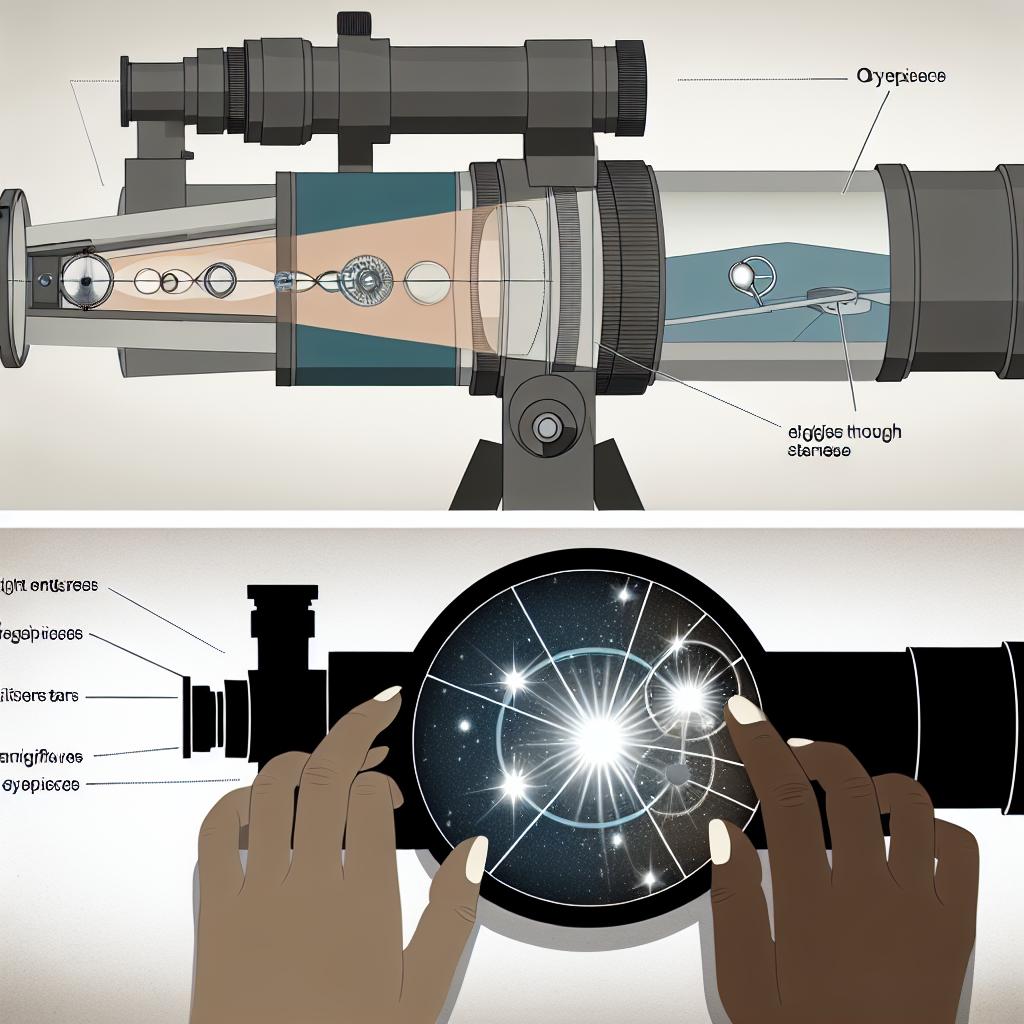Understanding Eyepieces in Telescope Magnification
Eyepieces play a crucial role in determining the magnification and overall viewing experience of telescopes. Unlike the main optical system of the telescope, which gathers light, the eyepiece focuses on expanding the image and allowing the observer to inspect it in greater detail. This article explores the functional importance of eyepieces in telescope magnification.
The Basics of Eyepiece Functionality
The primary role of an eyepiece is to magnify the image produced by the telescope’s primary optics, whether a mirror or lens. By altering the focal length, eyepieces can change the overall magnification of the telescope. Magnification is calculated by dividing the focal length of the telescope by the focal length of the eyepiece. Understanding this basic principle is essential for both amateur and professional astronomers, as it allows them to predict how different eyepiece combinations will affect their view of celestial objects.
Types of Eyepieces
There are various designs of eyepieces, each offering distinct advantages:
Plössl Eyepieces: Known for their simple design, Plössl eyepieces offer a broad field of view and good eye relief, making them popular for general observation. They consist of two pairs of lenses that provide a good balance between image clarity and affordability, making them a staple in many astronomy kits.
Orthoscopic Eyepieces: These eyepieces are favored for planetary observation due to their excellent image quality and minimal distortion. Orthoscopic eyepieces typically consist of an achromatic triplet field lens and a singlet eye lens, which work together to minimize aberrations and deliver crisp images of planets.
Wide-Angle Eyepieces: Designed for a more immersive viewing experience, wide-angle eyepieces provide an expansive field of view. They are especially useful for deep sky observations, such as viewing clusters and nebulae, due to their ability to capture more light and detail in a single glance.
Choosing the Correct Eyepiece
Choosing the correct eyepiece is essential not just for magnification but also for maintaining image quality. Higher magnification can sometimes result in a reduced quality of the observed image, making it crucial to find a balance between magnification and clarity. Additionally, eyepieces with superior optical coatings and materials, such as those made with high-quality glass, tend to produce clearer, crisper images. These coatings are applied to minimize reflections and increase light transmission through the eyepiece.
Understanding Focal Length: A shorter focal length eyepiece will provide higher magnification but will also narrow the field of view, which may not be suitable for observing extended celestial objects. Conversely, a longer focal length provides a wider view at the expense of magnification.
Considerations for Eyepiece Selection
When selecting an eyepiece for a telescope, several factors should be considered:
- Focal Length: Shorter focal lengths increase magnification but can narrow the field of view. This is crucial when the precision of celestial details needs to be observed, such as when studying the surface of the Moon or the rings of Saturn.
- Field of View: Depending on the objects being observed, a wider field of view may enhance the viewing experience. Large nebulas and galaxies are best viewed with eyepieces that offer wider angles, allowing more of the object to be seen at once.
- Eye Relief: Particularly important for eyeglass wearers, this is the distance from the outer surface of an eyepiece lens to the position where the eye can comfortably see the full field of view. Eyepieces with longer eye relief reduce the need to remove glasses, ensuring comfort during extended observations.
Advanced Eyepiece Designs
As technology advances, so too do the designs and capabilities of eyepieces. Modern eyepieces often incorporate features that enhance the observing experience:
Zoom Eyepieces: These eyepieces allow observers to adjust the magnification without changing eyepieces, offering convenience and flexibility, particularly important when switching between objects of varying size and brightness.
Parfocal Eyepieces: These are designed so that they require minimal focusing adjustment when swapping between different eyepieces of the same optical series, thereby saving time and maintaining image quality.
Corrected Optics: Advanced eyepieces often include lenses or groups of lenses that correct common optical problems such as field curvature and chromatic aberration, enhancing the overall quality and sharpness of the observed image.
Practical Tips for Observers
When using a telescope, it’s vital to understand the conditions that might affect image quality:
Avoid Over-magnification: While it might be tempting to maximize magnification, it’s often more productive to prioritize clarity and a stable image over zooming in excessively, which can lead to blurry or shaky views.
Cleanliness Matters: Keeping eyepieces clean is crucial, as dust or smudges can significantly degrade the image quality. Using a soft lens brush or microfiber cloth is recommended.
Experimentation and Patience: Astronomy is as much about experimentation and learning as it is about observing. Trying different eyepiece and telescope combinations will help in understanding their capabilities and limitations.
Conclusion
The role of eyepieces in telescope magnification is fundamental, allowing observers to delve deeply into the details of the night sky. While the choice of eyepiece can dramatically affect the observations, understanding the interplay between focal lengths, fields of view, and image quality can help enthusiasts make informed decisions. Each eyepiece design has its own specific advantages, and choosing the right one often depends on the observer’s goals and the conditions under which they are observing. For further reading on topics related to telescopes and eyepieces, consider exploring Sky & Telescope or Astronomy magazine for in-depth resources and reviews.
This article was last updated on: July 26, 2025


